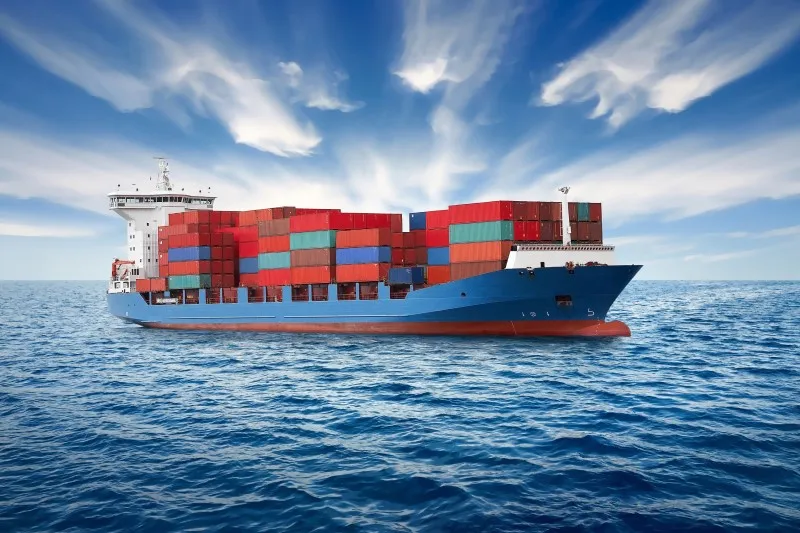A key decision in supply chain management and logistics is choosing between air and sea freight, which necessitates a careful consideration of several variables. Every form of transportation has unique benefits and drawbacks, and the best option will rely on the particulars of the package.
Air Freight:
Air freight is a quick and effective way for airplanes to carry cargo. Its swiftness makes it perfect for shipments of perishable items and those with tight deadlines. Despite Air Freight Forwarding Services being more costly than sea freight, the speedy delivery reduces transit times, which helps sectors like fashion, electronics, and pharmaceuticals. Schedule adherence by airlines guarantees dependability. Air freight, however, is not always able to carry very heavy or large loads. Businesses that prioritize quick and dependable international transportation use it despite its higher carbon emissions per ton-mile due to its accessibility to a wide range of locations. Reynolds-Feighan, A. J. (2017).
Sea Freight:
A ship’s way of moving cargo across seas and oceans is called sea freight. Because of its affordability, it is appropriate for larger cargo and bulk shipments. For companies with non-urgent delivery deadlines, sea freight is the best option, although it is slower than air freight. It provides scalability, allowing for the transportation of large or heavy things that might not be possible by air. Sea freight is still a dependable and popular choice in international trade, despite any delays brought on by bad weather or port problems. Businesses that are concerned about sustainability find it enticing because its environmental impact is typically smaller than that of air freight.
Key aspects to be considered before choosing between Sea Freight and Air Freight:
Following are some of the important factors that companies need to take into account when deciding whether air freight or sea freight is preferable.
- Speed and Time Sensitivity: The speed of transportation is one of the main elements determining the decision between air and sea freight. Transporting goods across continents via air freight is known for its lightning-fast delivery timeframes, frequently taking only a few days. This speed is especially useful for goods that must arrive on time or for businesses where delivery on time is essential. For example, firms in the pharmaceutical, electronics, and fashion industries frequently use air freight to fulfill deadlines and reduce the chance of product deterioration. Sea freight, on the other hand, moves more slowly by nature; shipments across seas can take weeks.
- Cost considerations: Air freight is more expensive than marine freight, despite its superior speed. The price of fuel, handling charges, and the volume or weight of the cargo all have an impact on the cost of air transportation. Because of this, air freight is less cost-effective for large cargoes, particularly if delivery is not required right away. However, because sea freight is so affordable, it’s the method of choice for companies who are shipping big loads of goods or bulk commodities. Businesses and services like Best Freight Forwarders In USA, evaluate their priorities and financial restrictions before making a decision, which frequently comes down to a trade-off between speed and cost.
- Reliability and Consistency: Since businesses depend on regular delivery schedules, reliability is an essential factor in freight transportation. In general, air freight is thought to be more dependable in terms of keeping to delivery dates and schedules. Airlines follow rigid timetables, and punctuality is highly valued in the aviation sector. For businesses using just-in-time inventory management or those with strict production schedules, this dependability is a big benefit. In contrast, sea freight is dependable for regular shipments but can be delayed by bad weather, clogged ports, or unanticipated events. Businesses that have tight delivery deadlines may find it difficult to deal with this volatility.
- Environmental Impact: As sustainability gains prominence, businesses are paying more and more attention to how transportation affects the environment. When compared to marine freight, air freight is linked to higher carbon emissions per ton-mile. Sea freight could be a more environmentally friendly choice for a company if meeting regulatory criteria or environmental responsibility is a top priority. Even if it means sacrificing some speed, some businesses are integrating environmental factors into their logistics choices and may decide that maritime freight best fits their sustainability objectives.
- Cargo Volume and Size: When deciding between air and sea freight, the volume and size of the cargo play a major role. There are restrictions on the size and weight of cargo that air freight can carry. Even if air cargo technology has improved capacity, sea freight is still the best option for large or very heavy commodities.
- Connectivity and Accessibility: In the modern world of technology and artificial intelligence, when making decisions, both the connection of transportation networks and the accessibility of transportation routes are important considerations. When transporting to landlocked countries or those with restricted access to seaports, air freight is frequently the best option. Airports offer improved accessibility to a wide range of places due to their increased worldwide prevalence and interconnectivity. However, locations with established port infrastructures and effective distribution networks might benefit more from sea freight. (bestassignmentwriter,2020)
- Risk of Damage and Insurance: When deciding between air and sea freight, firms need to carefully consider the risk of damage occurring during shipment. When compared to sea freight, air freight often requires less handling and movement of cargo, which lowers the possibility of damage from rough seas or loading/unloading procedures. Nonetheless, there is a chance of turbulence during plane travel, which could harm delicate or fragile items.
- Customs and Regulatory Compliance: Two crucial facets of international freight transportation are navigating customs processes and guaranteeing regulatory compliance. Air freight is a good option for shipments that need to reach their destination quickly because it is frequently linked to quicker customs clearance procedures. Sea freight may require lengthier clearance times even though customs procedures are usually fast, especially in crowded ports.
Conclusion:
In conclusion, the decision between air and sea freight is complicated and depends on several variables, including cargo size, accessibility, speed, cost, and environmental impact. In the dynamic global supply chain, businesses need to find a balance between supporting overarching goals and meeting their demands.
References:
- Reynolds-Feighan, A. J. (2017). Available at < https://www.emerald.com/insight/content/doi/10.1108/9780080435930-028/full/html >
- 2020. Effective Implications of AI for Digital Marketing. Available at < https://bestassignmentwriter.co.uk/blog/effective-implications-of-ai-for-digital-marketing/ >



